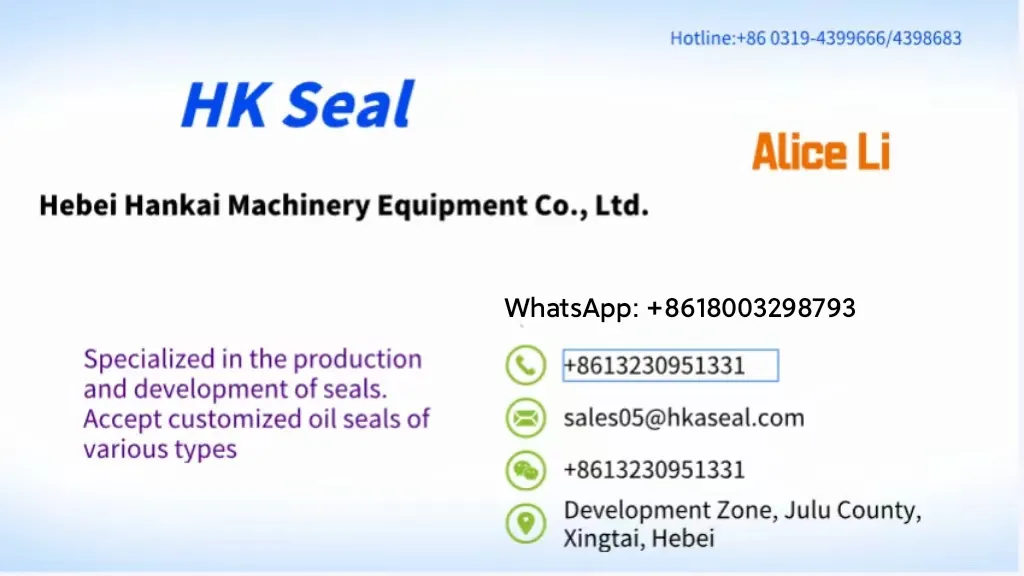9 月 . 23, 2024 12:20 Back to list
Front Hub Seal Replacement Guide for Improved Vehicle Performance and Longevity
Understanding Front Hub Seals Essential Components for Vehicle Performance
When it comes to automotive engineering, seemingly small components can have a significant impact on the overall performance and longevity of a vehicle. One such crucial part is the front hub seal. This article explores the role, importance, and maintenance of front hub seals, offering insights into their functionality in vehicles.
What is a Front Hub Seal?
The front hub seal is a critical component located between the wheel hub and the axle assembly of a vehicle. Its primary function is to prevent the ingress of dirt, water, and contaminants into the wheel hub assembly while retaining the lubricating grease. These seals are typically made from durable materials such as rubber or polyurethane, designed to withstand extreme conditions and pressures.
Importance of Front Hub Seals
1. Protection Against Contaminants The front hub seal acts as a barrier against outside elements like mud, dirt, and moisture, which can cause significant damage to the wheel bearings and hub assembly. If these contaminants penetrate the hub, they can lead to premature wear and tear, potentially resulting in costly repairs or replacements.
2. Lubrication Retention A properly functioning front hub seal retains lubrication within the hub assembly. Grease is essential for the smooth operation of the bearings and helps reduce friction, heat, and wear. If the seal fails, grease can leak out, leading to insufficient lubrication and ultimately, component failure.
3. Noise and Vibration Reduction Front hub seals also help in minimizing noise and vibrations generated by the wheel assembly during vehicle operation. A damaged or worn seal may lead to an increase in noise, which can be a nuisance and indicative of underlying issues.
Signs of a Failing Front Hub Seal
front hub seal

Recognizing the symptoms of a failing front hub seal early can save vehicle owners from expensive repairs. Here are common signs
- Grease Leakage The presence of grease around the wheel hub is a clear indication that the seal has failed. This leakage can attract dirt and debris, further compromising the hub's integrity. - Unusual Noises Grinding or humming sounds from the wheel area may suggest a lack of lubrication or damage to the wheel bearings due to a failing seal.
- Vibration Noticeable vibrations while driving, especially at higher speeds, may signify issues related to the front hub seal or associated components.
Maintenance and Replacement
To ensure optimal performance, regular inspections of the front hub seals are recommended, especially on vehicles that frequently operate in harsh environments. During routine maintenance, mechanics typically check for signs of wear, damage, or contamination in the hub seal.
If a seal is identified as failing, it should be replaced promptly. Replacement involves removing the wheel, dismantling the hub assembly, and installing a new seal. It’s essential to ensure that the new seal is properly seated to maintain its intended function.
Conclusion
In conclusion, front hub seals play a vital role in the overall health and performance of a vehicle. By preventing contamination, retaining lubrication, and minimizing noise, these seals contribute significantly to vehicle longevity and reliability. Vehicle owners should prioritize regular maintenance and be vigilant for signs of failure to ensure their vehicles operate smoothly and efficiently. Investing time in understanding and caring for these small but mighty components can lead to substantial savings and enhanced driving experiences over time.
-
The Power of Advanced Sealing: High-Pressure Solutions for Modern Machinery
NewsOct.29,2024
-
Optimizing Machinery with High-Performance Oil Seals
NewsOct.29,2024
-
Maximizing Machinery Efficiency with Advanced Oil Seals
NewsOct.29,2024
-
Ensuring Equipment Longevity with Quality Oil Seals
NewsOct.29,2024
-
Enhance Equipment Performance with Quality Oil Seals
NewsOct.29,2024
-
Custom Oil Seals for Specialized Machinery Needs
NewsOct.29,2024
-
The Role of Wiper Seals in Dust Sealing and Oil Protection
NewsOct.20,2024
Products categories
















